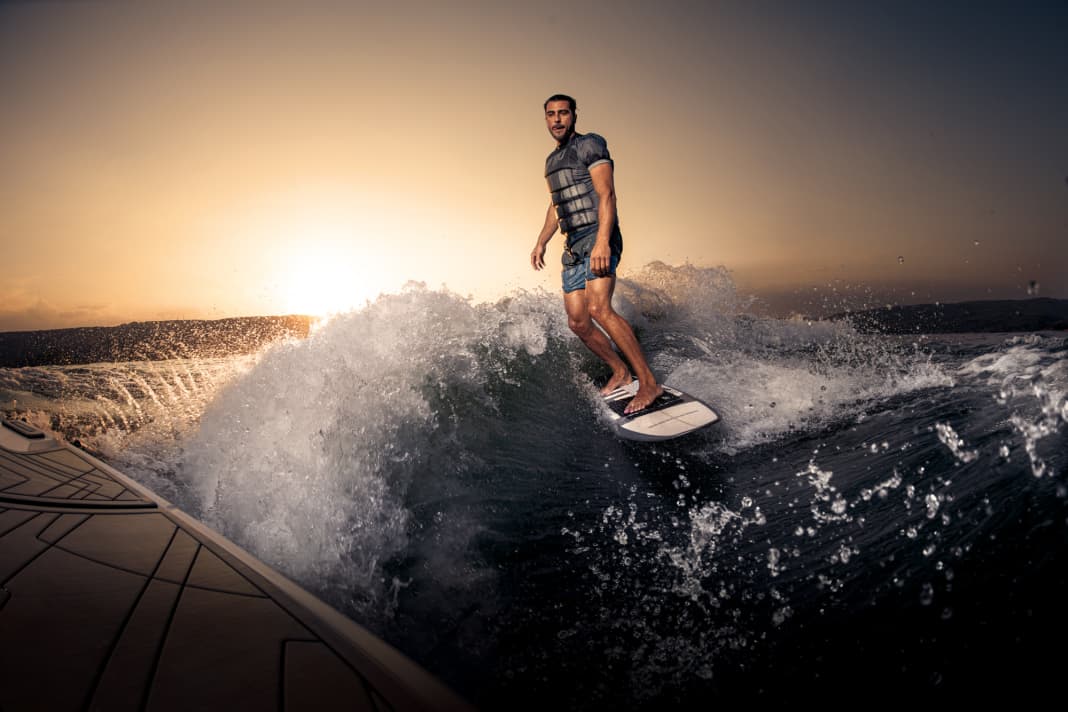



Wakesurfing has experienced a real boom in recent years. Riding the wake of a boat travelling at eight to ten knots has even spawned special surf models from yacht brands such as Four Winns, Nautique, Malibu and Heyday. Z-drive boats with an attached tower, which are designed for wakeboarding (with a tow rope and at around 20 knots), have been avoided by wakesurfers. Mainly because the proximity to the propeller poses a potential danger. Not so with the Forward Drive, where the counter-rotating propellers are positioned in front of the underwater section, as with the IPS system from Volvo Penta, giving swimmers and surfers alike a reassuring feeling.
Volvo Penta revises system
The Swedes introduced the forward-facing drives back in 2015 and recently presented a revised system that draws its power from two 294-kilowatt petrol engines. The combination with the in-house V8 unit should turn even boats over 15 metres long into wave powerhouses with double the engine power - with high ballast and a flat frame in the stern, wave crests should tower as high as wakeboard towers.
Volvo Penta cites improved manoeuvrability, fuel efficiency, acceleration and strong thrust as further advantages of the Forward Drive over the Z-drive. The Scandinavians also revised the operating system and provided the touchscreen operation with a simplified menu, an improved user interface and extended diagnostic options. Trim and ballast are controlled at the touch of a finger on the multifunctional display, which can be used to shape either steep waves for advanced sailors or flat stern seas for beginners. The system saves up to 20 individual wave profiles. There is also Tow Mode, which automatically accelerates to the preset engine speed and compensates for load fluctuations.
The new Watersport Control software is available for the entire Forward Drive range, including twin and single systems. For wakesurfers, Volvo Penta's twin forward drive, which will be available from August 2023, means one thing above all: more waves and therefore more fun on the water.
